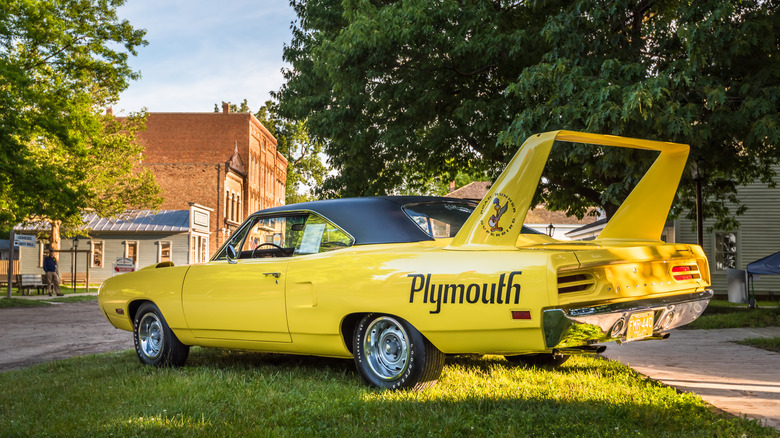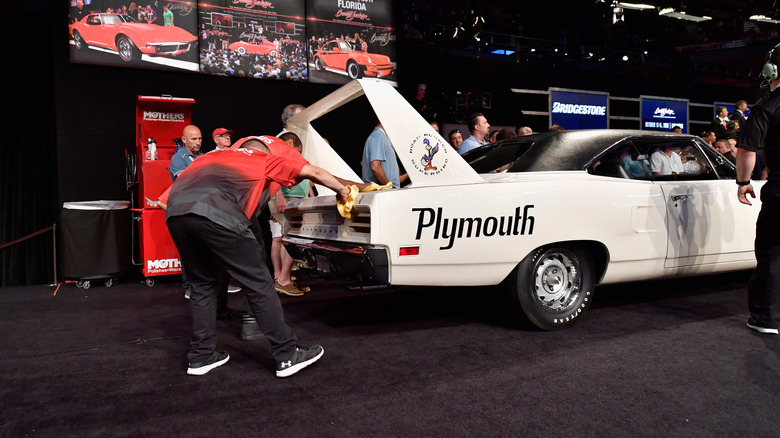How The Legendary Plymouth Superbird Got Its Name
Superman. Super Bowl. Super Mario. It's tough to deny that the prefix/word "super" tends to be reserved for things that are really, really great. For classic car fans, there are a wide range of vehicles worthy of it, such as the legendary Lamborghini Miura. One particular car, however, has the prefix baked right into its name: the Plymouth Superbird.
The Superbird was introduced in 1970, during an era of intense competition among muscle car makers. The year before, Dodge's Charger Daytona landed, a customized take on the Charger 500 that proved to be a NASCAR powerhouse and race winner that hit a new track record of 200 mph.
Plymouth, for its part, then unleashed the Superbird, an equally formidable and perhaps even more beautifully garish vehicle. It, too, was created because only vehicles with models available to the public could compete in NASCAR. Its title, Superbird, seems to derive from that of the Plymouth model that was customized to create it.
The greatest Looney Tunes reference ever?
In October 1969, the first Superbird was completed. They were modified from Plymouth Road Runners, and in developing that vehicle, Plymouth certainly made the most of acquiring the license of the titular Looney Tunes character (which cost the auto manufacturer $50,000). In addition to a car horn making the character's distinctive sound, the vehicle also boasted a rather stylish Road Runner graphic.
As any muscle car enthusiast knows, the key with such vehicles is to lean all the way into the aesthetic (some such classic cars are even available at somewhat sensible prices today). As such, in developing the customized model, there was no more appropriate way to convey the fact that this was a souped-up bird than the title Superbird.
Plymouth certainly excelled with the Superbird. The hood, fenders, and other elements were adjusted to improve performance, and the fact that elements of the Dodge Coronet were used in conjunction with the Road Runner base meant that the process of creating it wasn't as expensive as it could otherwise have been.
Around 2,000 non-racing Superbirds were made. Equipped with a Chrysler 426 Hemi V8 engine, it was quite the beast, a striking Looney Tunes-tinged model that is still revered today.

